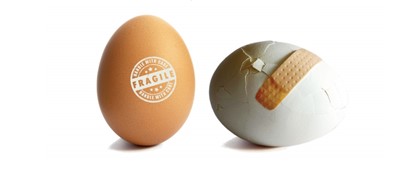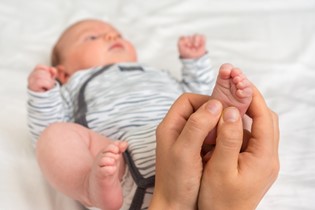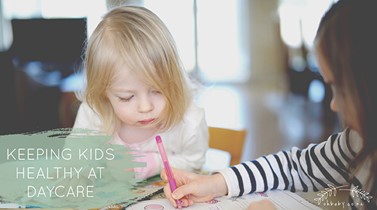When IVF doesn't work

A common concern for couples involved in IVF treatment is what will happen if IVF doesn't work. Does the failure of IVF spell the end of your parenthood journey? Dr Richard Fisher explains the possibilities.
What to do when IVF doesn't work is a much more complex question than it first appears. The answer to the question depends as much on the circumstances that led to the initial treatment as it does on why that treatment may not have worked. As well as what might be possible comes an associated question as to what might be wise, in terms of future treatment. That will depend on the emotional robustness of the couple having treatment as well as the resources available around them to support whatever choices they make. One of the difficulties that infertile couples have in dealing with their peers, friends, and families is often a failure of those groups to understand the complexity of the myriad of choices that follow any particular treatment, whether it succeeds or fails.
With the continuing changes in the quality of embryology (the way that the embryos are grown and developed in the laboratory before being transferred into a woman's uterus), the cumulative chance of conception after a small number of treatment attempts with IVF can be quite high. For the average woman under the age of 38, it will be as much as 80-85% after three attempts. The range around that number will depend on the individual, although it is very rarely possible to know who was in the "better" or "worse" group before a number of treatment cycles are completed. Clearly there are constraints to access for such treatment, with public funding being limited to up to two cycles of treatment providing certain criteria are met, and private treatment being costly enough that a significant number of couples cannot contemplate it. Nevertheless, if continuing with treatment is possible, most younger women will end up conceiving.
What to do after any particular failed treatment cycle of IVF will depend on the background. Young women will normally be encouraged to try again. Only a very few young women will learn during treatment that either they or their partners have such a complicated problem that the advice would be to stop. Couples with high expectations of success commonly find failure a much more devastating circumstance than do those whose expectations are not so high.
The consequential emotional toll that failure of treatment has will determine their future actions. For some couples, even continuing low chances of success will not lead them to decide to stop treatment. The job of the reproductive medicine specialist, therefore, is to ensure that couples are absolutely clear about the likely chance of success, and just as importantly, the escalating emotional toll that recurrent failures can cause.
The availability of good information and a readily accessible counselling service is a very important part of reproductive medicine practice. Older women may have made the decision to try IVF in the hope of conception using their own gametes (eggs and sperm), but in the knowledge that if this doesn't work, the use of somebody else's donor eggs might be a back-up option. Similarly, this can happen in couples where the primary problem is a male one. These days, we can use very small numbers of sperm to fertilise eggs, using the process of intracytoplasmic sperm injection (ICSI), but if the complexity of the treatment proves too daunting, or recurrent attempts lead to continuing failure, then the option of donor insemination may remain.
It is important to remember that although IVF has the best chance of success in any particular month of trying, the decision to do IVF is often made where there is a continuing month-by-month chance of success naturally, even if this is quite small. The decision to stop IVF treatment, therefore, does not preclude pregnancy occurring in the future. For some couples, the need to make a decision whether to start using contraception or not becomes a real dilemma. As long as the chance of pregnancy remains, the stresses that go with sub-fertility will remain too.
Most couples who have required complex treatments to conceive allow themselves around a nanosecond of joy before they convert that joy into an anxiety about the likely outcome of the conception. It is impossible to be involved in treatment of sub-fertility without understanding that not all early pregnancies continue and the risk of miscarriage is very real, even though it is no greater than natural conception. For many women, finally reaching their apparent goal just converts one set of anxieties into another. This is an entirely normal response, but one which friends and families need to understand and empathise with. The urge to be positive and supportive needs tempering by the knowledge that sometimes, "almost but not quite successful" is worse than "not at all". Children born to IVF parents have very normal social outcomes, but these parents' history of delayed conception and sometimes multiple treatments may cause these anxieties to linger even beyond birth. The birth of a child is not a cure for infertility. The fact that couples may not be able to conceive by themselves without help is a cause for continuing grief for many families despite the joy of successful treatment. Having only one child may not be the aim of this family, and the stresses of the prospect of starting treatment again are difficult to ignore. Furthermore, the hard work of early parenthood is no easier for those whose pathway to conception was more complex than it is for those who conceived without difficulty. The fantasy of new parenthood may not match reality.
Infertility is about loss. Sometimes, the loss of things you never had or which you might be denied is every bit as acute as loss of things you had already gained. Understanding this allows one to support couples with sub-fertility more effectively.
Obvious losses such as miscarriage or stillbirth are often greeted with empathy, flowers, and visits. Less obvious ones, like treatment failure for infertility, are often met with silence. The decision to leave active treatment behind and refashion life into the future is never an easy one. It inevitably involves despair, self-doubt, and lots of tears. For a couple who so desperately wanted to conceive a child but couldn't, the loss is enormous. Children are all around us, and children with seemingly poorly motivated parents are more obvious than we would really wish. They are a daily stark reminder to infertile couples, and it is not possible to quickly switch off a desire for children and look to a different future. Support, both professional and personal, is important.
There is a need to find ways to live with or settle this grief and the concomitant anger and resentment which may commonly be present. Envy and bitterness are normal responses which need to be dealt with. Sometimes, the time that couples have tried to get pregnant prior to fertility treatment, added to the time treatment was occurring, is such a significant part of their lives that the adjustment to a non- "fertility searching" life proves very difficult. In time, a decision to leave treatment behind can, for some, be quite liberating, and allows them to look forward positively to alternative ways in which they will lead their lives. Relationships that have been built around the quest for conception will need redefining. A refocusing on areas of relationship growth can create an entirely positive environment for the couple. Deciding not to have further treatment should be the end of a particular expedition, not the end of the journey. In time, reflecting on this expedition should be at least a neutral event, not a negative one. If it is not, people like me will have failed in their task.
For many, a closer and more involved relationship with nieces, nephews, and cousins might provide a positive experience, both for them and for their wider family. The desire for a more immediate relationship may lead to the consideration of adoption or fostering.
The process of adoption, sadly, is no less stressful than complex treatment. There are very few newborn children available for adoption in New Zealand, and the process of information, assessment, and potentially being chosen as an adoptive parent is stressful and prolonged. Child, Youth and Family (CYF) run courses on alternative ways of parenthood, which are informative and realistic. Many couples find the information enlightening, but the process unsettling, with its requirement for social work assessment. Exploration of a couple's relationship and circumstances can prove daunting. The instability of regulations around overseas adoption, both in overseas countries and in New Zealand, makes overseas adoption an equally difficult task. Some ethnic groups within our community find sourcing potential adoptive children somewhat easier, but the legal and social requirements remain the same.
Fostering children is also handled through CYF, but many couples who have found the stresses of infertility difficult view the stresses of the transitory nature of fostering as being just too hard.
It is entirely possible to live satisfying and full lives without the presence of children. Some couples do this by choice. There are many examples of people I have seen over the years who have survived the disappointments of infertility to live their lives enriched in other ways. Empathetic understanding by those in contact with couples for whom childlessness was not their forst choice will further enrich their lives.
|
Richard Fisher FRCOG, FRANZCOG, CREI together with Freddy Graham established Fertility Associates in 1987 after previously starting up New Zealand's integrated infertility medicine group at National Women's. He is New Zealand's foremost medical spokesperson on matters of reproductive health and has been an advocate for better access to care for couples with infertility throughout his career. He has four children and is married to Leigh, without whom he could never have practiced medicine with the enthusiasm and commitment that he has. Visit www.fertilityassociates.co.nz to find out more. |

AS FEATURED IN ISSUE 12 OF OHbaby! MAGAZINE. CHECK OUT OTHER ARTICLES IN THIS ISSUE BELOW

















